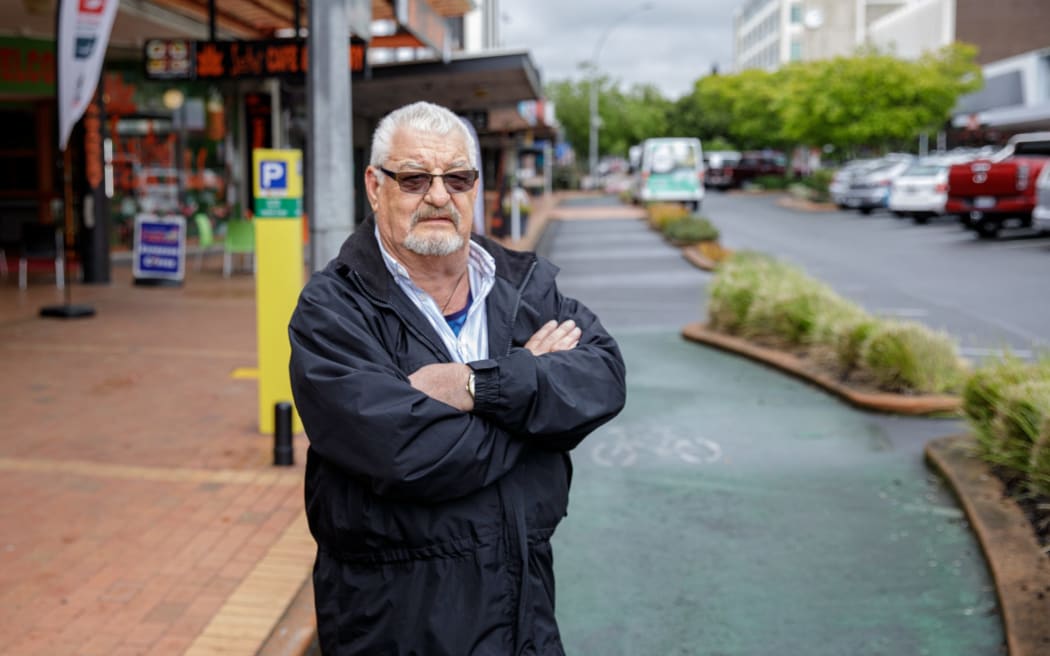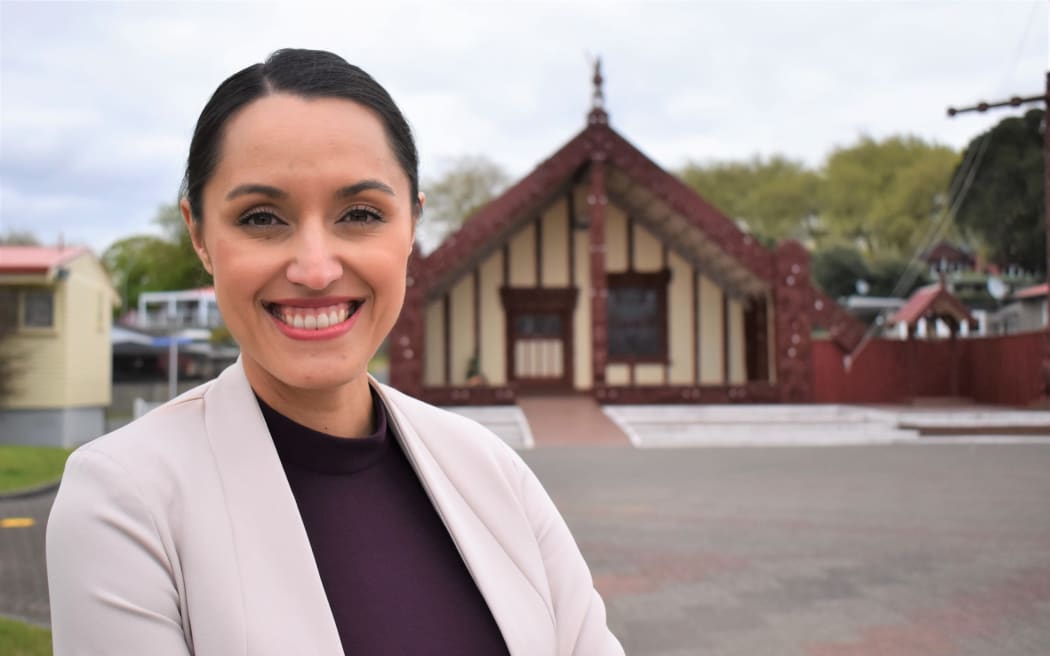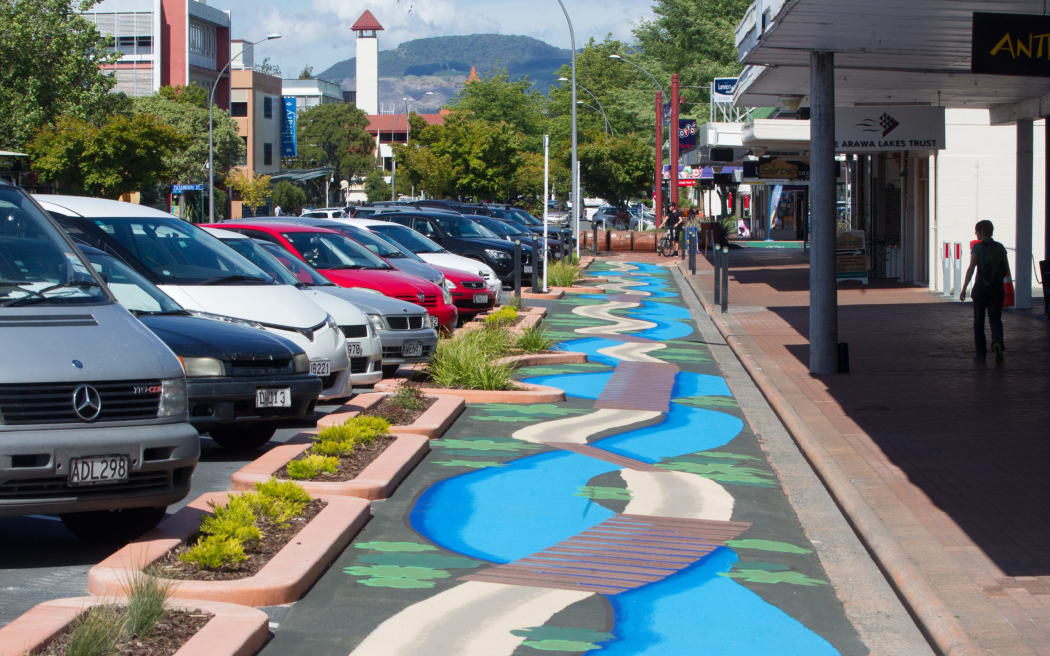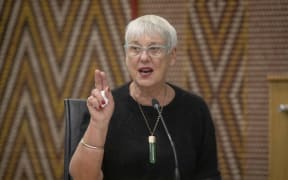
Vault bar owner Ross Swenson, who had previously organised a petition against the Green Corridor. Photo: Rotorua Daily Post / Mead Norton via LDR
Twenty-nine car parks removed seven years ago as part of Rotorua's "Green Corridor" cycleway are set to return as a stretch of the cycleway is removed.
The removal, starting next week, will cost $50,000. The entire cycleway's construction cost $442,000 in 2015.

The announcement, made on Thursday, has been met with joy from one affected business, whose manager says the cycleway was rarely used.
The section to be removed, on Hinemoa Street between Fenton and Tūtanekai streets, will mean the reinstatement of about 29 car parks, including two mobility spaces and three motorcycle parks.
The parks will be a mix of free 60-minute time-limited parks and paid 180-minute parks.
Rotorua mayor Tania Tapsell was pleased the work would likely be completed ahead of the holiday season.
"We've listened to feedback and are taking action to help support local businesses and residents as we lead into a busy summer shopping period."

Rotorua mayor Tania Tapsell. Photo: LDR / Felix Desmarais
Rotorua Lakes Council infrastructure and environmental solutions deputy chief executive Stavros Michael said there were no plans at this stage for the removal of the rest of the Green Corridor.
"When the Green Corridor was installed we were still working on extending our shared path network.
"We now have an extended network throughout our city, a total of about 60 kilometres that link to and around the CBD, and a transport functionality review that provided options for the CBD determined that it could be removed."
The council was able to fit the removal of the Hinemoa Street section of the Green Corridor into the current financial year, at a cost of about $50,000, Michael said.
"The rest will be looked at as part of development of CBD revitalisation plans that are still to be finalised."
Sulphur City Soapery owner Jackie Lunam said she "150 percent" supported the removal.
"It is such a waste of money, it's a waste of space, there are no car parks, no one uses it."
It would "definitely" improve business and the removal made "sense", Lunam said.
"We have people come in and they've been driving around for ages trying to get car parks.
"It's a real shame it didn't work because [the council] spent so much money on it."
Vault bar owner Ross Swenson, who had previously organised a petition against the Green Corridor that attracted 700 signatures, said the announcement was "absolutely brilliant".
"They should never have put it down in the first place."
He said he felt vindicated but didn't think it would take seven years for the cycleway to be removed.
Lotus Cafe and Bakery manager Amy Nguyen said it was "very good news".
"We've got more car parks. It's what we've been waiting for, for a long time."
She said she did not like the cycleway and rarely saw people use it.
"It was hard for my customers to find a car park, they had to drive round and round and round."
It would improve business for the cafe, she said.

The Green Corridor when it opened in 2015. Photo: Rotorua Daily Post via LDR
Cycling enthusiast Jenny Lux said she believed that particular section was "poorly designed" but cycleways should be considered as networks.
"There does need to be a more straightforward path through the city for bikes.
"I don't really like the piecemeal approach.
"If you're going to remove a tiny portion of an existing cycleway, how does that help the continuity of the cycleway?
"Bikes and active transport do need to be prioritised even more, rather than minimised.
"The reason people are so dependent on cars and parking in the centre is because public transport is not as frequent as it needs to be to make it really accessible.
"We just haven't reached that critical mass and density of cycleways that we need to encourage everyone to use their bikes."
Depending on the weather or any other unexpected setbacks, it was expected the removal work would take up to two weeks, carried out by Fulton Hogan as part of its regular maintenance contract with the council, a statement said.
Businesses in the vicinity were being notified and disruption was expected to be minimal with footpaths - and at least one side of the road - expected to remain open throughout the work.
Road management would be in place if and when required.
The council statement said a review of the functionality of the inner-city transport network, and the potential removal of the Green Corridor, provided three options for the CBD, all of which included the removal of the cycleway.
CBD revitalisation work was "still in its preliminary stages" following work with the Covid recovery inner-city group and pre-engagement with stakeholders on a framework that "pulled together common themes and elements from previous CBD plans".
The framework would form the basis for further discussion and considerations.
Council district development deputy chief executive Jean-Paul Gaston clarified there had been five previous inner-city plans, spanning 2006, 2010, 2015, 2018 and 2020, which were now being drawn on for the new inner-city strategy. Some elements of those plans had been implemented.
"One aspect the framework looks at is making better use of Haupapa St as a slower, safer park-to-park link between the Government Gardens and Kuirau Park," the council statement said.
"Speeds in and around the CBD will also be reviewed with a view to improving safety for all users.
"Final options for the CBD have yet to be developed and removal of the rest of the Green Corridor will be considered as part of this work."
The Green Corridor was initially recommended as part of a 2006 CBD revitalisation strategy that also included the establishment of Eat Street - a pedestrianised eating precinct at the northern end of Tūtanekai Street near the Rotorua lakefront.
It also included replacing City Focus with Te Manawa.
At the time, the Green Corridor "aligned with Rotorua's urban cycling strategy", the council statement said, and was a collaboration between the council, Rotorua Cycle Action and the former Inner City Focus Group, which represented CBD retailers and businesses.
After a consultation process the project was included in the 2015-2025 Long-term Plan and was completed in September 2015.
At a cost of $442,000, funding was made up of $252,000 from Waka Kotahi NZTA and $190,000 from the council.
"Due to changes requested by businesses in Haupapa St, the final cost was $72,000 higher than originally budgeted."
Fifty of the CBD's more than 3000 parks were removed to make way for the entire Green Corridor project, 29 of those on Hinemoa St.
At the time, those car parks had a 39 percent occupancy.
Local Democracy Reporting is Public Interest Journalism funded through NZ On Air




